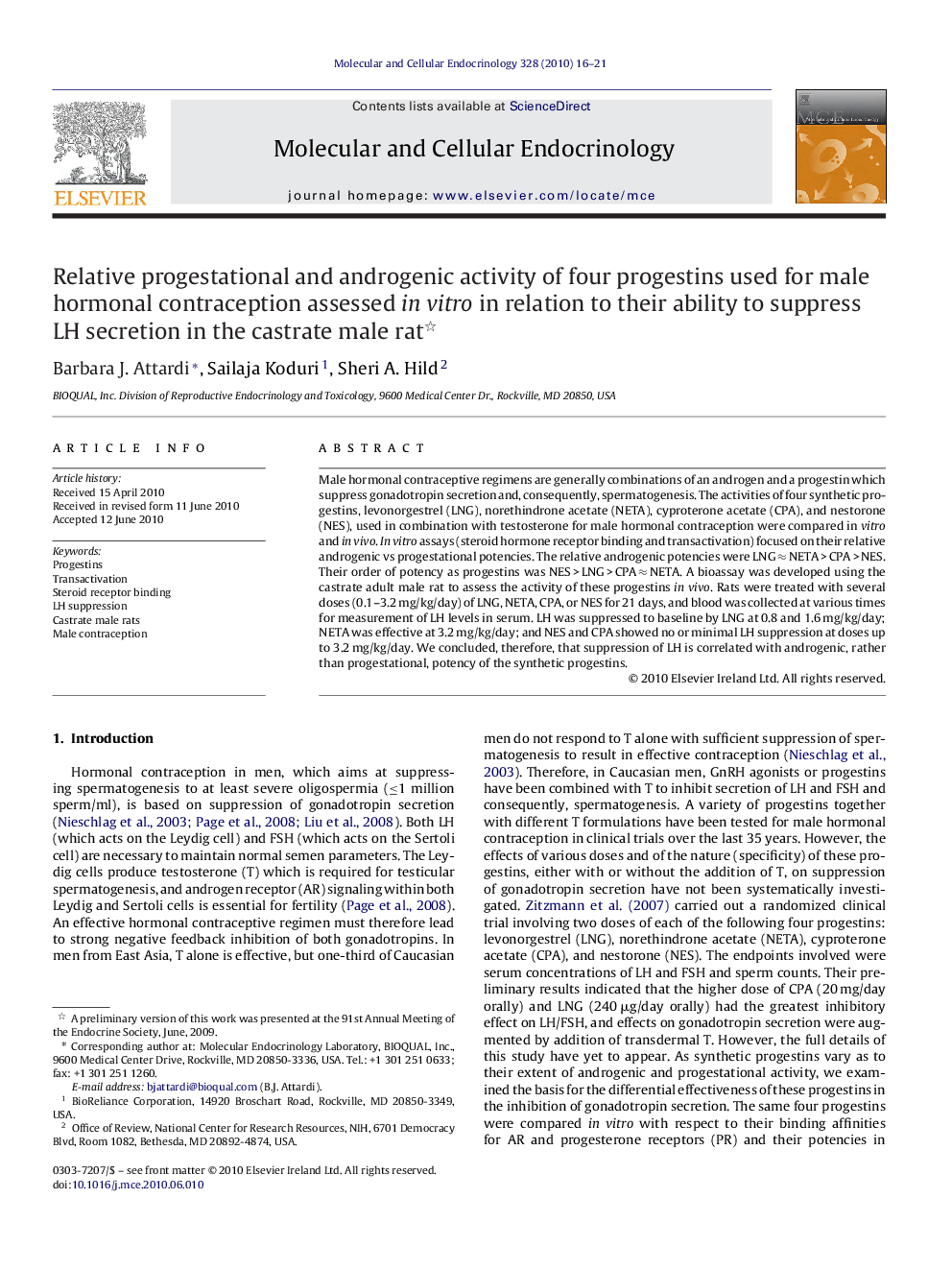| Article ID | Journal | Published Year | Pages | File Type |
|---|---|---|---|---|
| 2196728 | Molecular and Cellular Endocrinology | 2010 | 6 Pages |
Male hormonal contraceptive regimens are generally combinations of an androgen and a progestin which suppress gonadotropin secretion and, consequently, spermatogenesis. The activities of four synthetic progestins, levonorgestrel (LNG), norethindrone acetate (NETA), cyproterone acetate (CPA), and nestorone (NES), used in combination with testosterone for male hormonal contraception were compared in vitro and in vivo. In vitro assays (steroid hormone receptor binding and transactivation) focused on their relative androgenic vs progestational potencies. The relative androgenic potencies were LNG ≈ NETA > CPA > NES. Their order of potency as progestins was NES > LNG > CPA ≈ NETA. A bioassay was developed using the castrate adult male rat to assess the activity of these progestins in vivo. Rats were treated with several doses (0.1–3.2 mg/kg/day) of LNG, NETA, CPA, or NES for 21 days, and blood was collected at various times for measurement of LH levels in serum. LH was suppressed to baseline by LNG at 0.8 and 1.6 mg/kg/day; NETA was effective at 3.2 mg/kg/day; and NES and CPA showed no or minimal LH suppression at doses up to 3.2 mg/kg/day. We concluded, therefore, that suppression of LH is correlated with androgenic, rather than progestational, potency of the synthetic progestins.
